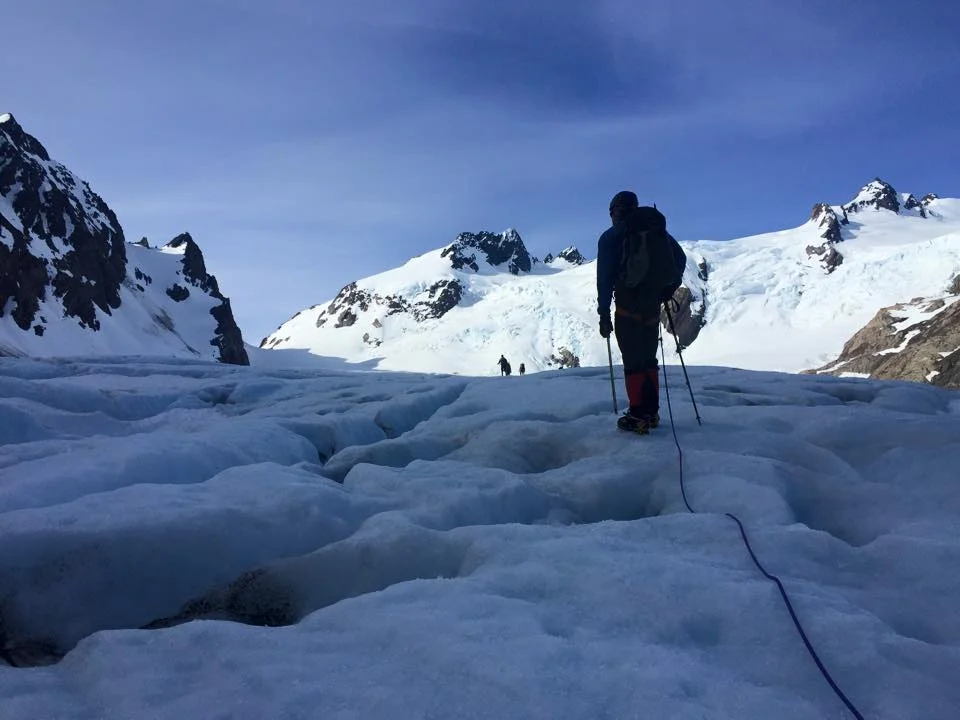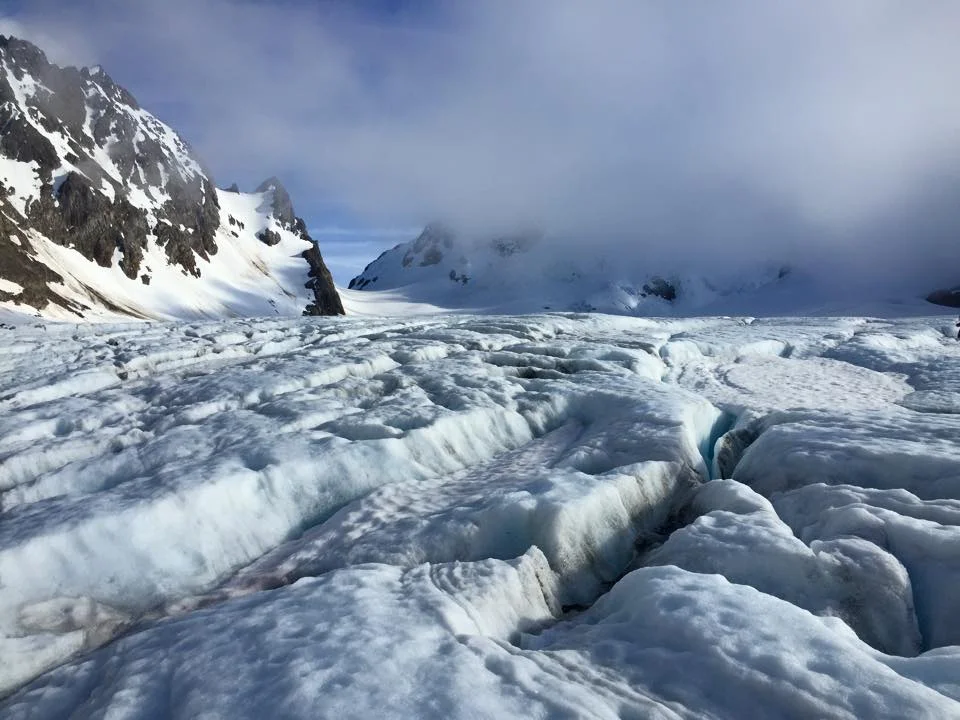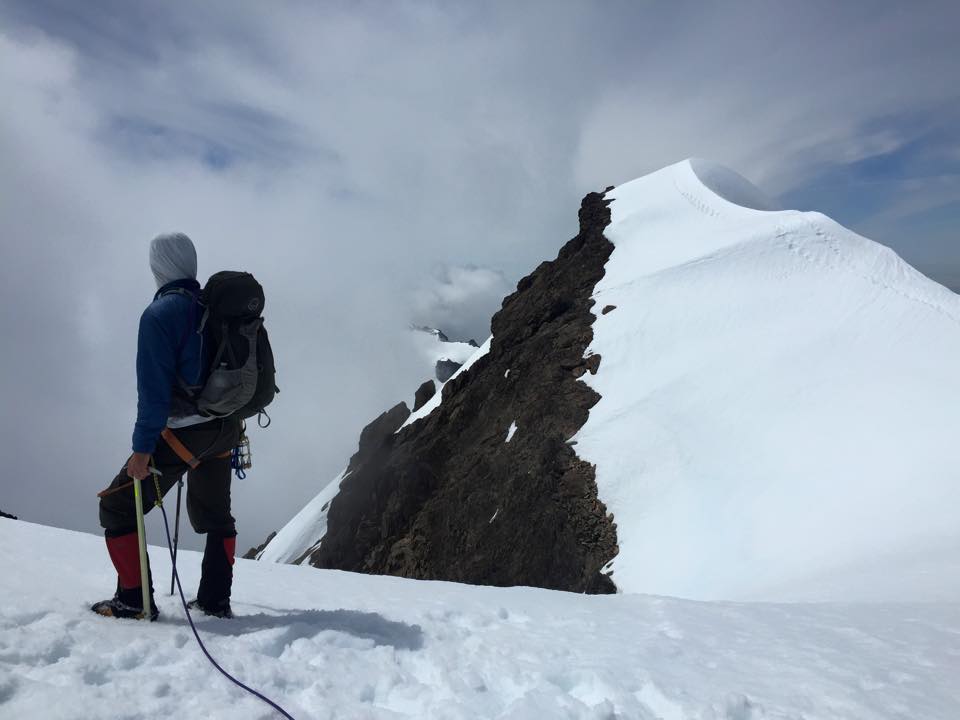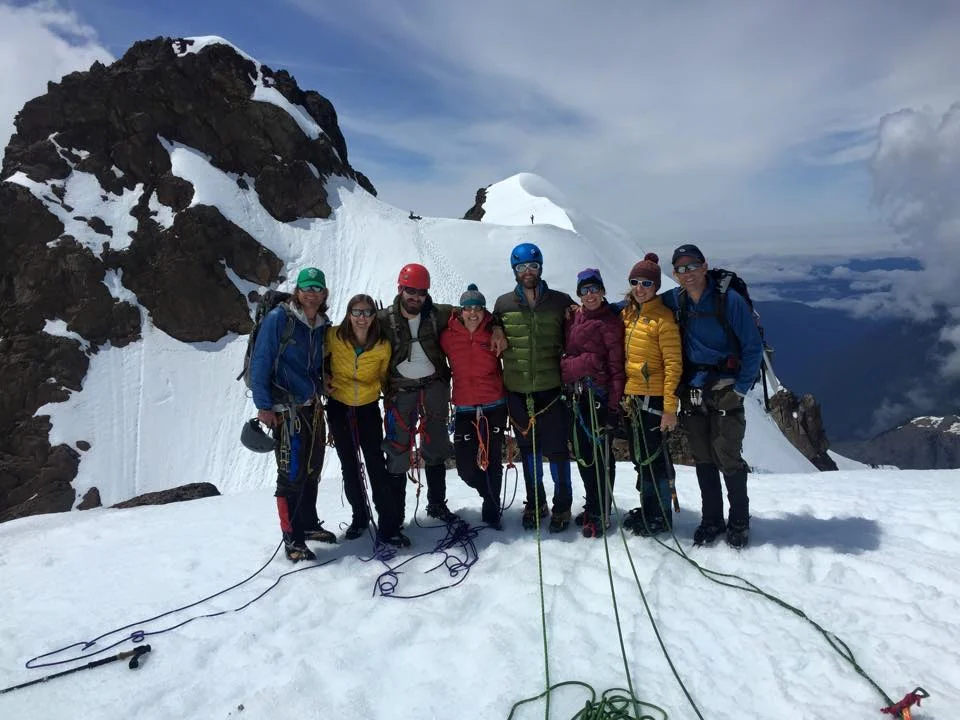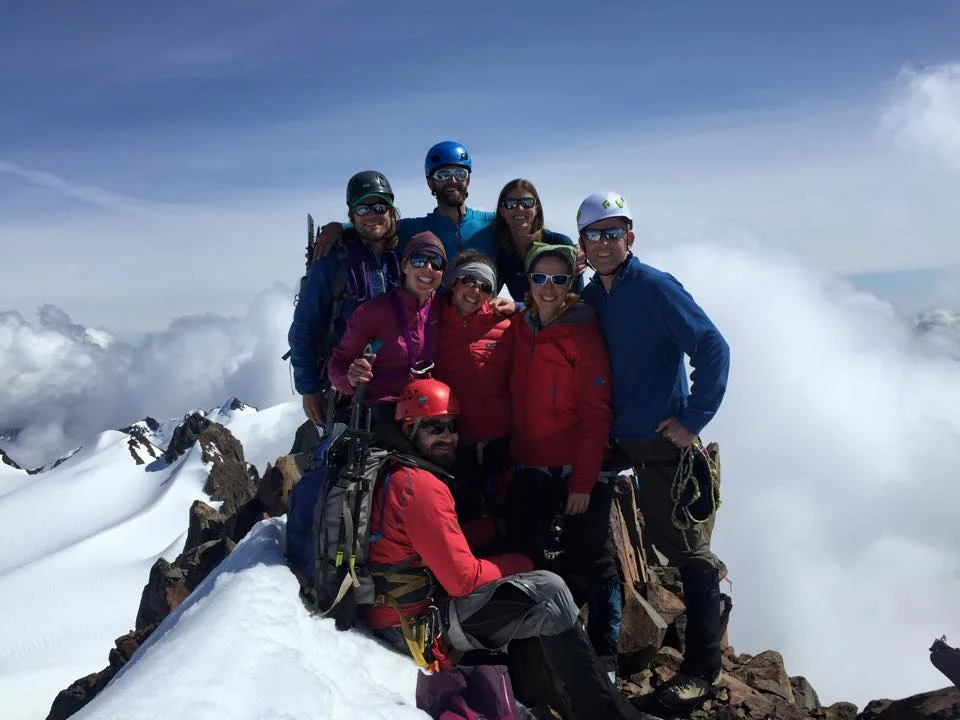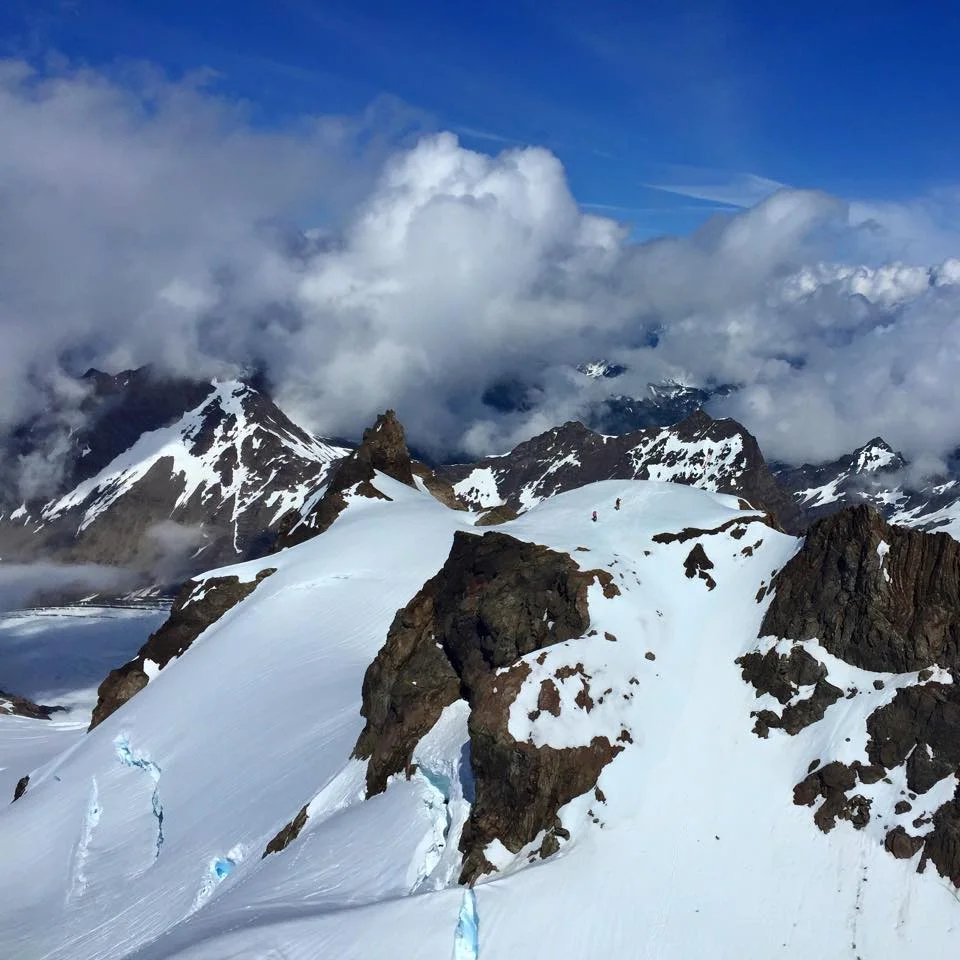The majestic yet technical ascent of Mount Olympus
By Stacia Glenn
One majestic mountain. Forty-four miles. Three days. Eight giddy climbers.
We set out for the summit of Mount Olympus with heavy packs and a determination that nothing would keep us from conquering the third most isolated peak in Washington State.
The 7,969-foot peak holds a prominent place in my heart because it was the first technical mountain I made it to the top of. That was five years ago and now I’d returned, curious to see how different the climb would feel with experience coloring my perspective.
The 17.5-mile trek through the rainforest and along the Hoh River was mostly flat so we cruised it, pausing only at an enormous washout that requires climbers to delicately walk down a loose dirt hill while holding a fixed line before popping up on the other side a half mile from base camp.
We found the last available camp site at Glacier Meadows, set up our tents and inhaled dinner.
Exhausted from the long walk and muggy weather, we slept right through our plan for an alpine start and were roping up on Blue Glacier by 8:40 a.m.
Olympus has six glaciers but Blue Glacier is special. It gets more rainfall than any other glacier in the Lower 48 with about 180 inches of precipitation every year.
Despite that, Blue Glacier continues to shrink. Some reports say as much 3.4 miles since the 1800s.
The glacier was more fissured than the last time I’d set foot on it and we carefully picked our way around the crevasses, gawking at the occasional deep pools of blue.
Next came Snow Dome, a steep slope that led us onto an open snow field below the mountain. The snow was soft and we had no problem kicking in steps, moving at the moderate pace required when you’re roped to other people.
In teams of four, we crossed Crystal Pass and gained the false summit.
Then we stopped dead in our tracks. We saw the first blip in our summit bid.
Snow covered the rocky summit block, essentially cutting off the normal 5.4 route. An easy dozen climbers stood at the base waiting for their chance to try a 5.7 route on another side.
It was already late afternoon and there was no time to spend waiting our turn in that line then hauling eight climbers to the summit.
We sat. We ate chocolate. We mulled. Then we hoofed it over and found a feasible route up.
It required simple moves made slightly tricky in mountaineering boots and carrying a pack.
Then, elation. Our entire group stood on the summit with dropped jaws and widened eyes as we took in the panoramic views of the Olympic mountain range.
Reluctantly, we rappelled down the 5.7 others had earlier climbed and began our descent.
We made it back to camp by 8 p.m., ripped off our boots and celebrated. It was short-lived though. Morning came and we again had to shoulder packs on weary shoulders and bust out the 17.5 miles back to the parking lot.
I’d climbed Olympus a day faster than I had previously (though nowhere as quick as the man who holds the record for 11 hours and 30 minutes). I hiked the approach in trail runners rather than mountaineering boots this time but my feet still screamed in agony. I did it smarter, in better spirits and in amazing company.
Despite my happy heart, my body ached. But on the four hour drive home, the pain faded and all I could think was: that’s one majestic mountain.



